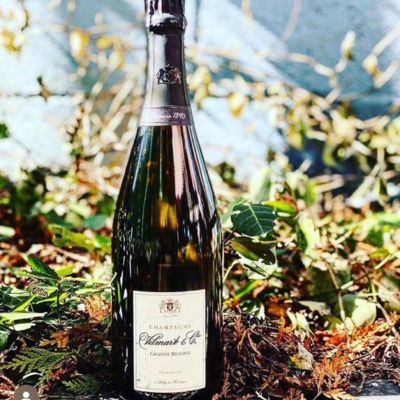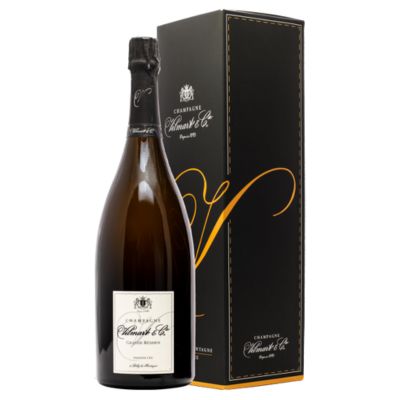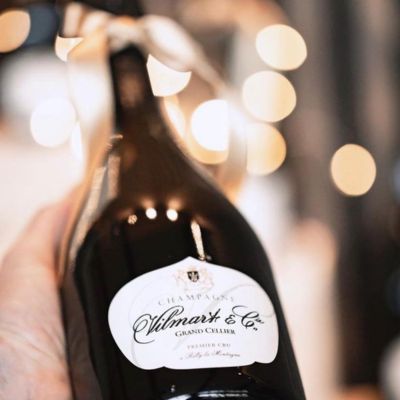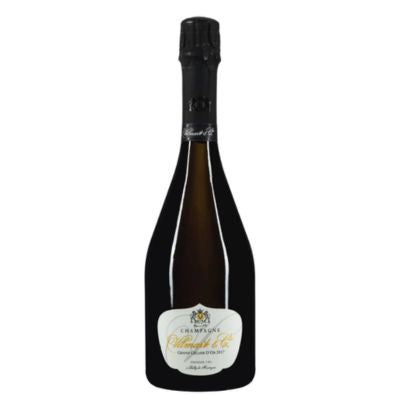Your shopping bag is empty
Go to the shopAll Wines
Easter Picks
Top Picks
New In
Wine Boxes
Sale
Type
Style
Country
Grape/Blend
- Back to Wines
- Albarino
- Albillo
- Barbera
- Brancello
- Cabernet Sauvignon
- Caiño Tinto
- Carignan
- Chardonnay
- Cinsault
- Corvina
- Espadeiro
- Gamay
- Garganega
- Garnacha
- Garnatxa Negra
- Godello
- Greco di Tufo
- Grenache
- Macabeu
- Malbec
- Marsanne
- Mataro
- Mencia
- Merenzao
- Merlot
- Mourvèdre
- Muscadet
- Nebbiolo
- Pansa Blanca
- Parellada
- Pinot Nero
- Pinot Noir
- Piquepoul White
- Riesling
- Rolle
- Rondinella
- Sangiovese
- Sauvignon Blanc
- Shiraz
- Souson
- Syrah
- Tempranillo
- Trebbiano
- Treixadura
- Verdicchio
- Viognier
- Xarel-lo
2021 ELY winebar. All rights reserved.
Champagne
Category
Country
- Argentina
- Australia
- Austria
- Chile
- France
- Alsace
- Bordeaux
- Margaux (Bordeaux)
- Medoc (Bordeaux)
- Burgundy
- Beaujolais
- Chablis
- Champagne
- Chateauneuf-du-Pape
- Côte-Rôtie
- Côte Chalonnaise
- Côte de Beaune
- Côtes du Rhône
- Jura
- Languedoc
- Loire Valley
- Pauillac
- Rhône
- Riviera del Garda
- Sancerre
- Vacqueyras
- Vin de Pays de L'Herault
- Germany
- Italy
- Alto Adige
- Asti
- Campania
- Colli Euganei, Veneto
- Nizza Monferrato
- Piedmonte
- Puglia
- Tuscany
- Valtellina Superiore
- Veneto
- New Zealand
- Portugal
- South Africa
- Spain
- Albillo
- Alella
- Alicante
- Cadiz
- Jerez
- Moclinejo
- Penedes
- Rias Baixas
- Ribeira Sacra
- Ribera del Duero
- Ribera del Mino
- Rioja
- Val do Salnes
- Vinos de Madrid
- Switzerland
Grape
- Albarino
- Albillo
- Barbera
- Brancello
- Cabernet Sauvignon
- Caiño Tinto
- Carignan
- Chardonnay
- Cinsault
- Corvina
- Espadeiro
- Falanghina
- Gamay
- Garganega
- Garnacha
- Garnatxa Negra
- Godello
- Greco di Tufo
- Grenache
- Jaen
- Macabeu
- Malbec
- Malvasia
- Marsanne
- Mataro
- Mencia
- Merenzao
- Merlot
- Monastrell
- Moscatel
- Moscato
- Mourvèdre
- Muscadet
- Nebbiolo
- Palomino
- Pansa Blanca
- Parellada
- Pinot Nero
- Pinot Noir
- Piquepoul White
- Riesling
- Rolle
- Rondinella
- Sangiovese
- Sauvignon Blanc
- Shiraz
- Souson
- Syrah
- Tempranillo
- Trebbiano
- Treixadura
- Ugni Blanc
- Verdicchio
- Viognier
- Xarel-lo
Style
Category
Country
- Argentina
- Australia
- Austria
- Chile
- France
- Alsace
- Bordeaux
- Margaux (Bordeaux)
- Medoc (Bordeaux)
- Burgundy
- Beaujolais
- Chablis
- Champagne
- Chateauneuf-du-Pape
- Côte-Rôtie
- Côte Chalonnaise
- Côte de Beaune
- Côtes du Rhône
- Jura
- Languedoc
- Loire Valley
- Pauillac
- Rhône
- Riviera del Garda
- Sancerre
- Vacqueyras
- Vin de Pays de L'Herault
- Germany
- Italy
- Alto Adige
- Asti
- Campania
- Colli Euganei, Veneto
- Nizza Monferrato
- Piedmonte
- Puglia
- Tuscany
- Valtellina Superiore
- Veneto
- New Zealand
- Portugal
- South Africa
- Spain
- Albillo
- Alella
- Alicante
- Cadiz
- Jerez
- Moclinejo
- Penedes
- Rias Baixas
- Ribeira Sacra
- Ribera del Duero
- Ribera del Mino
- Rioja
- Val do Salnes
- Vinos de Madrid
- Switzerland
Grape
- Albarino
- Albillo
- Barbera
- Brancello
- Cabernet Sauvignon
- Caiño Tinto
- Carignan
- Chardonnay
- Cinsault
- Corvina
- Espadeiro
- Falanghina
- Gamay
- Garganega
- Garnacha
- Garnatxa Negra
- Godello
- Greco di Tufo
- Grenache
- Jaen
- Macabeu
- Malbec
- Malvasia
- Marsanne
- Mataro
- Mencia
- Merenzao
- Merlot
- Monastrell
- Moscatel
- Moscato
- Mourvèdre
- Muscadet
- Nebbiolo
- Palomino
- Pansa Blanca
- Parellada
- Pinot Nero
- Pinot Noir
- Piquepoul White
- Riesling
- Rolle
- Rondinella
- Sangiovese
- Sauvignon Blanc
- Shiraz
- Souson
- Syrah
- Tempranillo
- Trebbiano
- Treixadura
- Ugni Blanc
- Verdicchio
- Viognier
- Xarel-lo
Style
Category
Country
- Argentina
- Australia
- Austria
- Chile
- France
- Alsace
- Bordeaux
- Margaux (Bordeaux)
- Medoc (Bordeaux)
- Burgundy
- Beaujolais
- Chablis
- Champagne
- Chateauneuf-du-Pape
- Côte-Rôtie
- Côte Chalonnaise
- Côte de Beaune
- Côtes du Rhône
- Jura
- Languedoc
- Loire Valley
- Pauillac
- Rhône
- Riviera del Garda
- Sancerre
- Vacqueyras
- Vin de Pays de L'Herault
- Germany
- Italy
- Alto Adige
- Asti
- Campania
- Colli Euganei, Veneto
- Nizza Monferrato
- Piedmonte
- Puglia
- Tuscany
- Valtellina Superiore
- Veneto
- New Zealand
- Portugal
- South Africa
- Spain
- Albillo
- Alella
- Alicante
- Cadiz
- Jerez
- Moclinejo
- Penedes
- Rias Baixas
- Ribeira Sacra
- Ribera del Duero
- Ribera del Mino
- Rioja
- Val do Salnes
- Vinos de Madrid
- Switzerland
Grape
- Albarino
- Albillo
- Barbera
- Brancello
- Cabernet Sauvignon
- Caiño Tinto
- Carignan
- Chardonnay
- Cinsault
- Corvina
- Espadeiro
- Falanghina
- Gamay
- Garganega
- Garnacha
- Garnatxa Negra
- Godello
- Greco di Tufo
- Grenache
- Jaen
- Macabeu
- Malbec
- Malvasia
- Marsanne
- Mataro
- Mencia
- Merenzao
- Merlot
- Monastrell
- Moscatel
- Moscato
- Mourvèdre
- Muscadet
- Nebbiolo
- Palomino
- Pansa Blanca
- Parellada
- Pinot Nero
- Pinot Noir
- Piquepoul White
- Riesling
- Rolle
- Rondinella
- Sangiovese
- Sauvignon Blanc
- Shiraz
- Souson
- Syrah
- Tempranillo
- Trebbiano
- Treixadura
- Ugni Blanc
- Verdicchio
- Viognier
- Xarel-lo
Style
Champagne
Champagne - more than just a type of wine, and more than a region in France, the very word Champagne conjures images of joviality, and it is seen as a fundamental ingredient in the recipe for any celebration, from the most polite of parties to scenes of reckless abandon. Because, when it comes to sparkling wine, there is Champagne, and then everything else. Pretenders come and go with the fashions, but Champagne remains the constant, the standard-bearer, the ideal to which all others aspire. Or is it?
Champagne’s long-held status as the tipple of choice for almost any celebration is something of a double-edged sword. There are few in Champagne who will dissuade you from buying a bottle and popping that cork regardless of the occasion, but does the association with all things festive and celebratory mean we don’t see Champagne for what it really is – a wine. Granted, it is one that has bubbles, but it is also a wine with an incredible scope of flavour and range of styles, from brut nature to demi-sec, white to rosé, vintage to non. A crisp, lemon-scented Blanc de Blancs is a very different bottle to a Pinot & Meunier dominated, aged vintage wine, and they are not all suited to the same occasion. So, here’s a few tips to enhance your next Champagne drinking experience- whatever the occasion!
- Don’t exclude the little guys. Champagne - the region and the market – is dominated by the Grande Marque houses, those big name bottles we see promoting events and sponsoring awards, and between them they account for the vast majority of what we see on the Irish market. But the smaller producers are staking their ground, and the popularity and range of Growers Champagnes (they both grow the grapes and make the wines) is at an all-time high. You probably won’t recognise the name on the label, but take a chance – or better still, ask for advice- and you’ll likely be rewarded with a carefully produced wine of individuality and real character.
- Try different styles based on your taste. As Champagne is produced from three different grapes – Chardonnay being the only white one, with Pinot Noir and Meunier playing equal importance- each producer, from the smallest grower to the biggest brand has their own style and blend, and no two are the same. A house that focuses on Chardonnay will tend to produce fresher, more elegant wines, while those with more Pinot or Meunier in the blend will be more structured and powerful. It all comes down to taste – Pinot dominant houses like Bollinger or the excellent Dravigny make full bodied, complex and vinous wines, often better suited to dining than just drinking (see next paragraph). Personally, I love the purity and freshness of a great Blanc de Blancs – Charles Heidsieck’s NV Blanc is sublime, their Blanc des Millenaires is utterly magnificent, and Taittinger Comtes de Champagne makes me weep actual tears of joy.
- Champagne is for dinner, not just for drinking. We’ve all done it – drank the Champagne while chatting (or reading the menus, back when that was a thing) and then moved on to “real” wine to have with our food. I’m not saying you shouldn’t drink it beforehand; I’m just saying you should continue to drink it with the meal. With its combination of crisp acidity, delicate fruit and fine mousse, Champagne is a natural partner for food, and not just the obvious. Yes, an aforementioned Blanc de Blanc would be a stunning pairing with fresh-from-the-sea oysters, or shellfish of any kind, but don’t limit yourself just seafood. Richer Champagnes will work with most white meats, while the Pinot based wines will pair with most Pinot-friendly foods. We served Dravigny ‘Cuvee Ambre’ (60% Pinot Noir) with steak tartare in the wine bar and it was a sensational match. Lighter rosés will marry beautifully with salmon, but a richer, vintage rosé is a knock-out with roast duck or rack of lamb.
Vilmart & Cie Champagne
Vilmart enjoys, and deserves, cult status among champagne producers being one of the very best growers’ champagnes there is.
As Peter Liem of Champagneguide.net says “Vilmart & Cie. is not only one of the greatest grower-estates in Champagne, but one of the finest champagne producers of any type in the region”. With Antonio Galloni of Vinous.com saying “When I think of finesse in Champagne, Vilmart is one of the first names that come to my mind.”
Located in the Rilly-la-Montagne, with 11 hectares of Premier Cru vineyard, and a heritage dating back to 1890 Vilmart is run by Laurent Champs who represents the fifth generation. Laurent brings a vitality, focus and skill that helps create exceptional wines through exceptional vinification.
Vilmart is one of the few organic growers in champagne (it helps to own your own vineyards) and each cluster is handpicked before the juice is fermented in oak barrels and foudres, enhancing the fruits’ roundness. There’s no malolactic fermentation (converting tart malic acid into milder lactic acid), allowing the fruit to retain its freshness and fine acidity to perfectly compliment the roundness and body of the fruit. 9-10 months in barrel, enhanced by batonnage, then a further 3-4 years in bottle for the non-vintage and 5-8 years for the vintages helps create some of champagnes most perfect wines.








